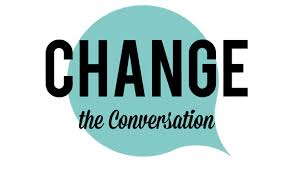
“Look,” the CEO said, “you can spout all that mumbo jumbo about major gifts being focused on donors and their needs, but the fact is that if the money doesn’t come in, none of that will matter!” And that was the end of the conversation. For this CEO, major gifts was about the money. I am not sure he would have made it in the commercial world if he had the same view of customers, i.e. that satisfying customer needs doesn’t matter, that all that matters is his bottom line.
But the top leaders are not the only problem as organizations try to keep major gifts a thing of the heart. Jeff and I have heard these kinds of statements coming from Directors of Development and MGOs:
- “Target the hot ones” – used to describe donors that are more predisposed to get involved with the organization.
- “If they don’t want to give, then just get rid of them” – used to describe donors who have either reduced their giving or are currently not giving. No effort is made to uncover why there have been changes. The donor is simply not valuable anymore.
- “We need to figure out which prospects to talk to.” – I absolutely despise the use of the word prospect when describing a donor. I know what it means. But the word itself makes a value judgment about the person. They are not a valued donor. And their past giving does not count. They are a prospect for a future transaction. They will have more value once we have secured their next gift.
And there are many more statements that are made about donors that reduces them to economic units rather than valuing them as partners and human beings. Language is powerful, and our choice of words can either create a true place of philanthropy and partnership or make the donor small and utilitarian.
Here is how you can start to change the internal conversation about donors and major gifts:
- Tell stories in every meeting you have. There are two types of stories to tell.
- The first type is stories about the need – the cause your organization is addressing. But don’t just talk about things in general terms, like “hunger in our city has grown by 10%”. Instead, tell a story about Ann, who is hungry. Don’t talk about animal abuse being on the rise. Show a picture of Polo, the tiny dog that was abused. Tell his story. Talk about the injustice to Don and his family. Talk about the wonderful stream that once was polluted, or Sarah’s fight against cancer. Talk about the refugee who is trying to find a new home. Make it personal. That is the first type of story.
- The second type is stories about the donor. Tell a donor story and why they are involved. Here is what that sounds like: “Before we get to the business of this meeting, I want to tell you about Robin, a donor who last month gave us $1,000. I called her up and asked her why she gave. You wouldn’t believe what she said….” Etc. Think about this. If you started every meeting with one of these stories, after a while everyone would get back to what is really important. Believe me, this is infectious. Just start doing it, and people’s attitudes and hearts will start to soften and change. Become known in your organization as the story-teller. I have seen hard-core finance, I.T. and operations people change right before my eyes as they got in touch with the need and with donors. These good people do have a heart. It is just buried underneath the need to secure the money and manage things correctly.
- Watch your language. Be very careful about what words you use to describe donors and the giving transaction. Treat the donor and the transaction with respect and honor.
- Correct the language of others. Yes, that’s right. Jeff and I are asking you to be in other people’s business. But do it nicely and carefully. And don’t correct someone in front of others, as that will shame them.
If you do these three things – tell stories about donors and the need, watch your language and correct the language of others – you will begin to see the culture change. It really does work.
Richard
PS – To really focus on this topic of the organization’s internal conversation, click here to request our free White Paper on Building a Culture of Philanthropy.
Read the whole series:







0 Comments